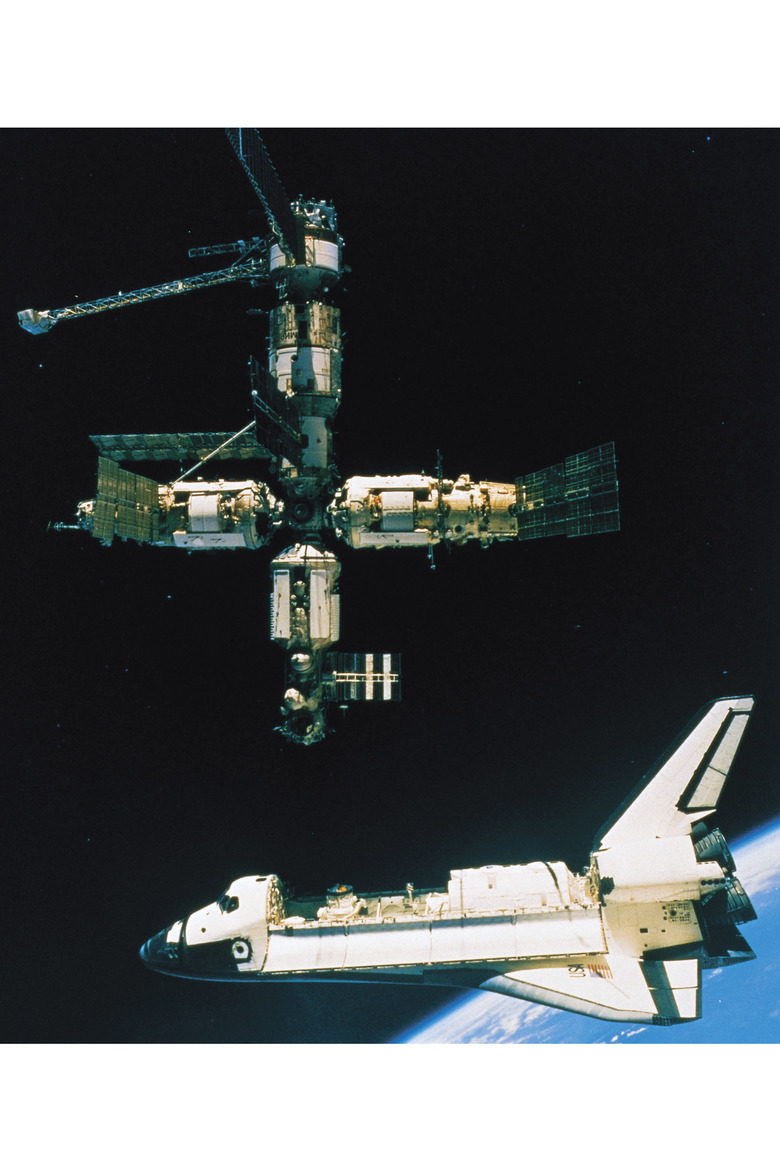What Kinds Of Experiments Are Done On The International Space Station?
Because the International Space Station orbits at about 400 km (250 miles) above Earth, it can collect a wide range of useful information about the planet using cameras, sensors and other devices. As NASA reports, experiments are also underway at any given moment on board the space station. Many of them capitalize on the fact that microgravity conditions exist in the ISS as it circles the globe. Some experiments help advance the science of space travel and others provide benefits that can improve the lives of people around the world.
Educational Experiments
Educational Experiments
While you can listen to ISS astronauts when they appear on the news, you might find it more fun to talk with them live. The goal of the Amateur Radio on the International Space Station experiment (ARISS) is to get students interested in math and science by enabling them to talk to space station crews over amateur radio. Astronauts use the experiment's hardware often to speak to teachers, parents, students and other large groups. When the ISS orbits over a school, students often have a five to eight minutes in which they can use their radios to ask astronauts questions.
Making Spacecrafts Safer
Making Spacecrafts Safer
Space is a harsh environment even when spacecrafts provide shielding to protect people from radiation and cold. Some experiments, such as Microbial Growth Kinetics under Conditions of Microgravity, or Biokin-4, are intended to make long space voyages possible by exploring ways to recycle elements essential to life. Astronauts who manage the Biokin-4 experiment examine the way bacteria grow in microgravity. The experiment's goal is to create a system that uses microorganisms to remove airborne contaminants in spacecrafts.
Keeping Astronauts Healthy
Keeping Astronauts Healthy
While making longer space missions possible is important, so is ensuring that astronauts remain healthy during and after their voyages into space. The Effects of EVA and Long-Term Exposure to Microgravity on Pulmonary Function (PuFF) experiment is a critical one because it helps astronauts learn how microgravity affects the lungs. Before this experiment existed, researchers thought that human lungs were sensitive to gravity. Findings from the experiment have shown that astronauts may not have to worry about lung problems while in orbit or performing extravehicular activity outside a spacecraft.
Farming Help from Outer Space
Farming Help from Outer Space
The space station also performs experiments that make life better for people on earth. The International Space Station Agricultural Camera, or ISSAC, snaps visible-light and infrared images of agricultural fields, forests and grasslands. Farmers and ranchers can view these images and use them to make agricultural decisions, such as irrigation and pesticide application planning.
Seeking Medical Breakthroughs
Seeking Medical Breakthroughs
The Recombinant Attenuated Salmonella Vaccine experiment, or RASV, has an extremely important mission: find a way to save lives by accelerating the development of a vaccine to fight pneumococcal pneumonia. Researchers hypothesize that the microgravity associated with space flight can speed up the development of a vaccine that can protect people from these types of diseases.
References
- NASA: Effect of Space Environment on Mammalian Reproduction
- NASA: Microbial Growth Kinetics Under Conditions of Microgravity
- NASA: The Effects of EVA and Long-Term Exposure to Microgravity on Pulmonary Function
- NASA: International Space Station Agricultural Camera
- NASA: Recombinant Attenuated Salmonella Vaccine
Cite This Article
MLA
Lee, Kevin. "What Kinds Of Experiments Are Done On The International Space Station?" sciencing.com, https://www.sciencing.com/what-kinds-of-experiments-are-done-on-the-international-space-station-12759474/. 2 January 2014.
APA
Lee, Kevin. (2014, January 2). What Kinds Of Experiments Are Done On The International Space Station?. sciencing.com. Retrieved from https://www.sciencing.com/what-kinds-of-experiments-are-done-on-the-international-space-station-12759474/
Chicago
Lee, Kevin. What Kinds Of Experiments Are Done On The International Space Station? last modified August 30, 2022. https://www.sciencing.com/what-kinds-of-experiments-are-done-on-the-international-space-station-12759474/
